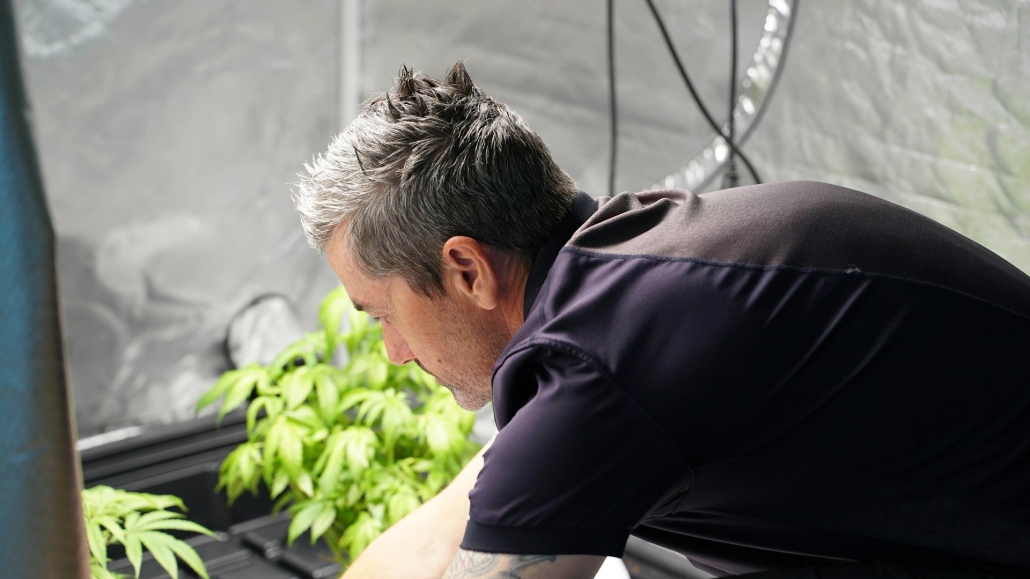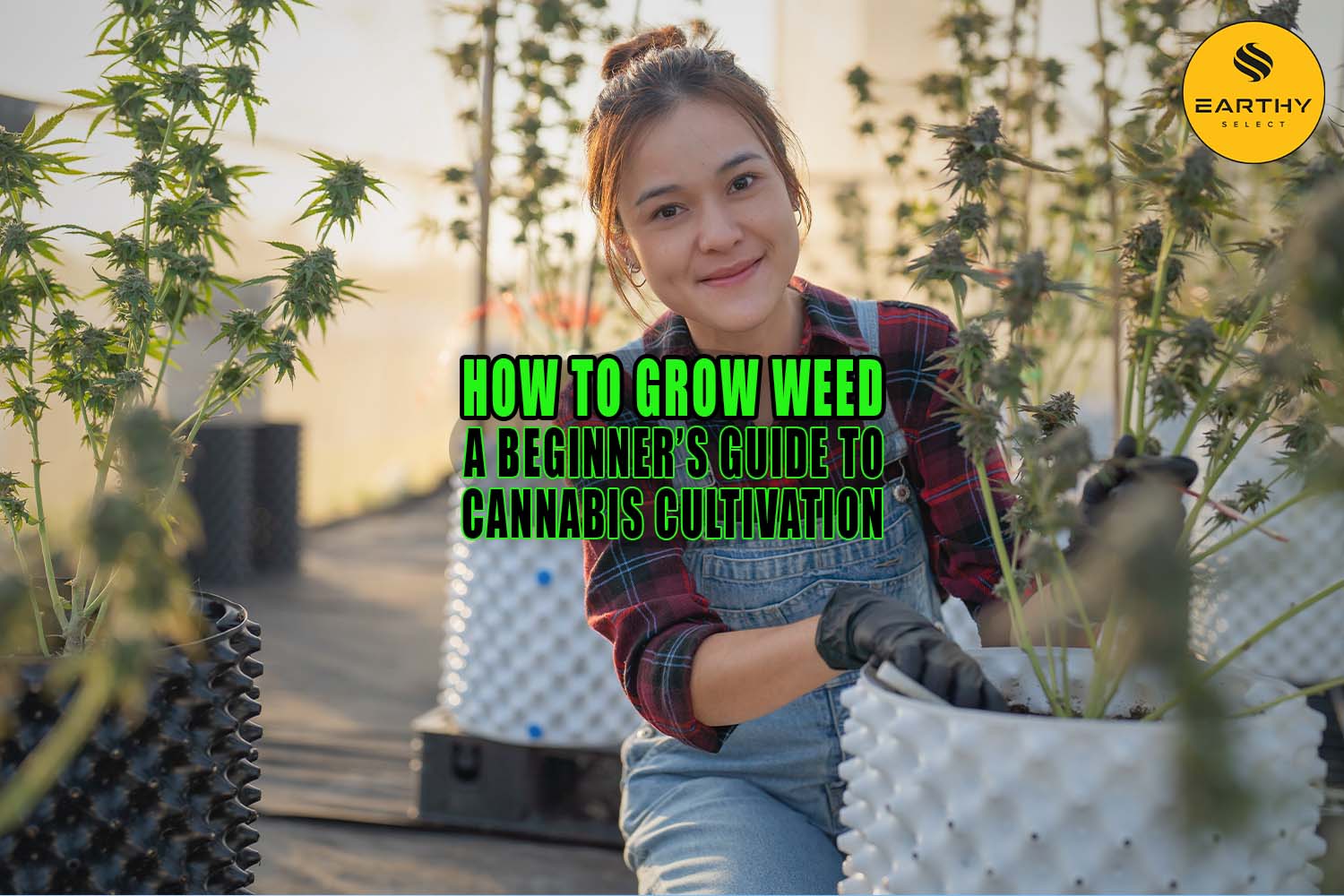How to Grow Weed: A Beginner’s Guide to Cannabis Cultivation
As the cannabis industry continues to expand, more people have become interested in learning how to grow weed at home. Whether you’re a complete beginner or someone with gardening experience, cannabis cultivation can be a rewarding hobby. In this guide, we’ll break down the process of homegrown weed cultivation, covering everything from selecting seeds to step-by-step directions for successful cannabis cultivation and harvest.
Understanding the basics of cannabis cultivation
Before diving into the technical aspects, you need to understand the basics of how to grow cannabis. Notably, cannabis plants go through distinct stages, each requiring specific care. These stages include:
- Seedling stage: When cannabis seedlings emerge from seeds, they are delicate and require careful attention.
- Vegetative stage: During this phase, the plant focuses on growing leaves and stems.
- Pre-flowering stage: The plant starts showing signs of its sex (male or female).
- Flowering stage: In the final stage, buds, or flowers, grow, eventually leading to harvest [1].
Understanding what a weed plant looks like during these stages will help you monitor your progress and spot any issues.
Legal considerations
First and foremost, abide by your local laws. As you may know, cannabis cultivation laws vary widely, and in some places, growing marijuana is still illegal. Marijuana is defined in the US Farm Bill as cannabis with more than 0.3% Delta-9 THC, whereas hemp is cannabis with no more than 0.3% Delta-9 THC. However, if your state allows you to grow, research your local laws, which should cover important details such as the maximum number of individual plants a person may grow at one time.
Essentially, cannabis cultivators must comply with federal and local regulations to avoid facing legal hurdles. In other words, you must understand and work within the specific rules in your area to ensure compliance. Violations can lead to fines, confiscation of your crop, or even criminal charges, depending on the severity [2].
THCa Flower and Decarboxylation: Transform Your Hemp
Choosing seeds and growing medium
When starting your cannabis cultivation, you’ll need to select the right seeds. For example, you likely want to purchase feminized seeds, which are ideal for beginners. Female plants eliminate the risk of growing male plants that don’t produce flowers. Or, you could choose autoflowering seeds, which automatically transition from the vegetative to the flowering stage regardless of light cycles.
Additionally, you must select the proper growing medium. Many cannabis growers use soil as their medium because it’s straightforward and effective. However, hydroponic setups, which use water rather than soil, have become popular because they offer total control over nutrients and water quality [3].
The 2024 Farm Bill: What Consumers and Businesses Can Expect
Indoor vs. outdoor cultivation
Next, you need to decide whether you’ll grow your cannabis indoors or outdoors. Keep in mind that each method has its pros and cons:
- Outdoor cultivation: Growing weed outdoors requires less equipment and is more natural in many ways. However, it also means you have less control over environmental conditions such as temperature, humidity, and airborne contaminants. Also, outdoor growers must be cautious about using pesticides that can harm water resources and kill fish in nearby streams.
- Indoor cultivation: Indoor growers have more control over their setup, often using specialized equipment to manage light cycles, temperature, and relative humidity. However, this requires a significant investment in energy and resources. For indoor growers, using ceramic metal halide lights or other energy-efficient options can help reduce costs while ensuring your plants receive adequate light [4].
Wholesale THCa Flower Strains: What to Look For
Setting up your growing space
If you’re growing weed indoors, create an environment that supports healthy cannabis growth. For example, select the right light cycles for each growth stage and maintain proper ventilation to prevent the buildup of biogenic volatile organic compounds. Also, keep the air quality high to prevent mold and mildew from damaging your plants.
Your growing space should also have adequate airflow to prevent airborne contaminants from affecting the plant material. For instance, fans and exhaust systems can circulate fresh air. Notably, the root system of cannabis plants thrives in well-aerated soil, so ensure your containers have good drainage [5].
The Intersection of Cannabis and Technology
The vegetative stage
After your baby weed plant has sprouted, it enters the vegetative stage, where the focus is on rapid growth. During this phase, the plants require more nitrogen to support leaf and stem development. Also, the relative humidity should be kept high, and the plants should be watered regularly without over-saturating the soil [1].
Many beginners ask, “How big should my plants be after 2 months?” While this can vary depending on the strain and growing conditions, most cannabis plants will have reached a substantial size, often between 2-3 feet tall, by the end of two months in the vegetative phase [1].
The flowering stage
Once the plant matures, it will transition to the flowering stage, where the buds (flowers) grow. This stage typically begins when the plant receives less light per day, simulating the natural shortening of daylight hours in autumn. Indoor growers can achieve this by adjusting their light cycles to 12 hours of light and 12 hours of complete darkness [1].
In the pre-flowering stage, you should monitor your plants closely to ensure they are all females. Notably, male plants do not produce usable buds. Thus, if left unchecked, they can pollinate your female plants, reducing the potency of your yield [1].
Depending on the strain, the flowering phase typically lasts between 6-10 weeks. Adjust nutrient levels and monitor water resources throughout this phase to prevent over-watering or nutrient deficiencies. Also, optimal air quality during this period should be maintained to ensure healthy bud development [1].

Harvesting and drying
Once the flowers grow to maturity, it’s time to harvest your cannabis plants. However, many beginner growers ask, “How will I know when my weed is ready for harvest?” But, don’t worry. You’ll know your plants are ready for harvest when the terminal bud develops fully and the trichomes (tiny resin glands) turn milky white or amber.
After harvesting, the drying process begins. Hang your buds in a dark place with good airflow to dry them properly. Typically, the drying stage takes up to two weeks, depending on environmental conditions. Remember, make sure the space is well-ventilated and has low humidity to prevent mold from forming.
Once your buds are fully dry, store them in airtight containers in a cool, dark place to cure them. Ultimately, curing allows the plant’s flavors and potency to develop, ensuring a higher-quality final product [6].
Troubleshooting common issues
Growing cannabis comes with its fair share of challenges. Many factors can affect your plants’ health, from nutrient deficiencies to pest infestations. Hence, during the vegetative growth and flowering phase, watch for signs of trouble, such as yellowing leaves, stunted growth, or mold. This way, you can address these issues promptly, ensuring your plants stay healthy and productive [7].
If you grow weed outdoors, be cautious of using cultivation sites located on public lands or in remote areas that may violate environmental laws. If you grow accidentally on these sites, you may inadvertently contribute to the proliferation of volatile organic compounds that may harm air quality and water quality in surrounding areas [8].
Premium, compliant cannabis products from Earthy Select
While you wait for your harvest, visit Earthy Select and learn more about popular strains and products. Browse an array of top-quality, organically produced cannabis products:
- THCa Flower Eighths, Quarters, Pounds: Containing abundant cannabinoids and terpenes, Earthy Select’s potent THCa Flower harnesses the plant’s full potential.
- Vape Products: Earthy Select’s Delta-8 THC premium vape cartridges and disposable vape pens feature a rich blend of cannabis terpenes for optimal flavor and effects.
- Cannabis Edibles: Delta-8, Delta-9, and Delta-10 Gummies are potent and made with all-natural ingredients. They offer an easy and delicious cannabis experience, and users report feelings of relaxation, euphoria, increased creativity, and pleasure.
Earthy Select THCa concentrates:
- Bubble Hash: Made through an ice-water extraction, this potent THCa hash satisfies the most discerning of cannabis concentrate connoisseurs.
- Diamonds: These sparkling THCa diamonds pack a full gram of concentrated THCa and .3 grams of live resin CBD sauce, terpenes, and other minor cannabinoids. 99.9% THCa!
- Live Rosin: Enthusiasts love Earthy Select’s powerful THCa rosin. Extracted from trichome-rich cannabis plants, this buttery treat is pure, potent, and flavorful.
Key takeaway: cannabis cultivation at home
Learning how to grow weed can be an exciting journey that allows you to produce your own cannabis products from start to finish. Whether you’re cultivating cannabis for personal use or exploring its potential in the cannabis industry, these steps will help you grow weed with confidence. Remember, growing cannabis requires patience, attention to detail, and respect for local laws. Yet, with the right care, you can enjoy a bountiful harvest of homegrown weed.
In the meantime, visit Earthy Select for premium Delta-8, Delta-9, Delta-10, and THCa products: Shop Now!
Famous Stoners: Find Out Who Puffs
Medical Disclaimer / Legal Disclaimer – Information is provided for educational purposes. It does not and is not intended to constitute legal advice or medical advice. We attempt to be accurate and up-to-date, but the legality of cannabinoids and the science of cannabis are evolving. The author is neither a legal professional nor a medical expert. Before buying or using any products, you should check with your local authorities and medical providers.
References
- Stages of Cannabis Growth
- Which States Allow You to Grow Your Own Recreational or Medical Cannabis?
- What’s the Best Growing Medium: Soil, Coco or Hydro?
- Growing Weed Indoors vs Outdoors: Pros and Cons
- What Is a Cannabis Grow Op?
- Beginner’s Guide to Harvest, Drying, and Curing
- 6 Common Problems Cannabis Growers May Encounter
- The Environmental Downside of Cannabis Cultivation
- Feminized vs. Regular Outdoor Cannabis Seeds
- Easiest Way to Grow Weed
- Growing Cannabis Outdoors
Frequently Asked Questions
What are the steps to grow weed easy vs hard?
- Easy: Use feminized seeds to avoid male plants, grow indoors for controlled conditions, use soil as a simple growing medium, and choose autoflowering strains. Also, follow a basic feeding and watering schedule [10].
- Hard: Grow from regular seeds, which requires identifying and removing male plants, and use hydroponics for more precise nutrient control. Adjust to weather, pests, and natural light cycles for outdoor growing [11].
Do you need to use feminized seeds for marijuana seeding?
No, marijuana seeding doesn’t need to be from feminized seeds. However, using feminized seeds increases the chances of growing female plants. Notably, female plants are better for production. In contrast, regular seeds will result in a mix of male and female plants, requiring you to remove males to prevent pollination [9].
How do you know if your cannabis seedlings are female?
You can identify female cannabis seedlings by looking for pre-flowers at the plant’s nodes. In other words, female plants develop small, hair-like structures called pistils, while male plants produce pollen sacs. This identification usually happens during the pre-flowering stage [9].



